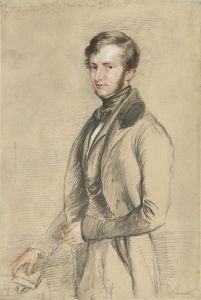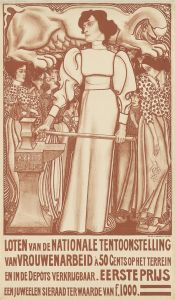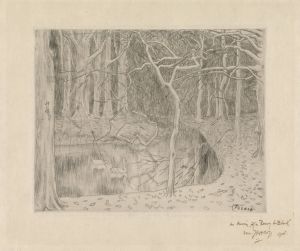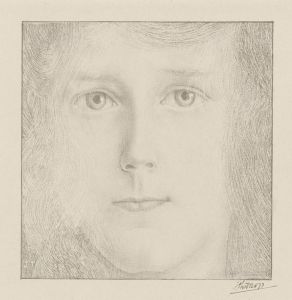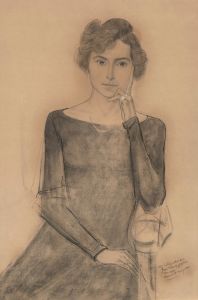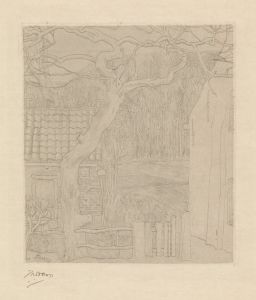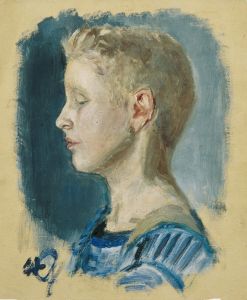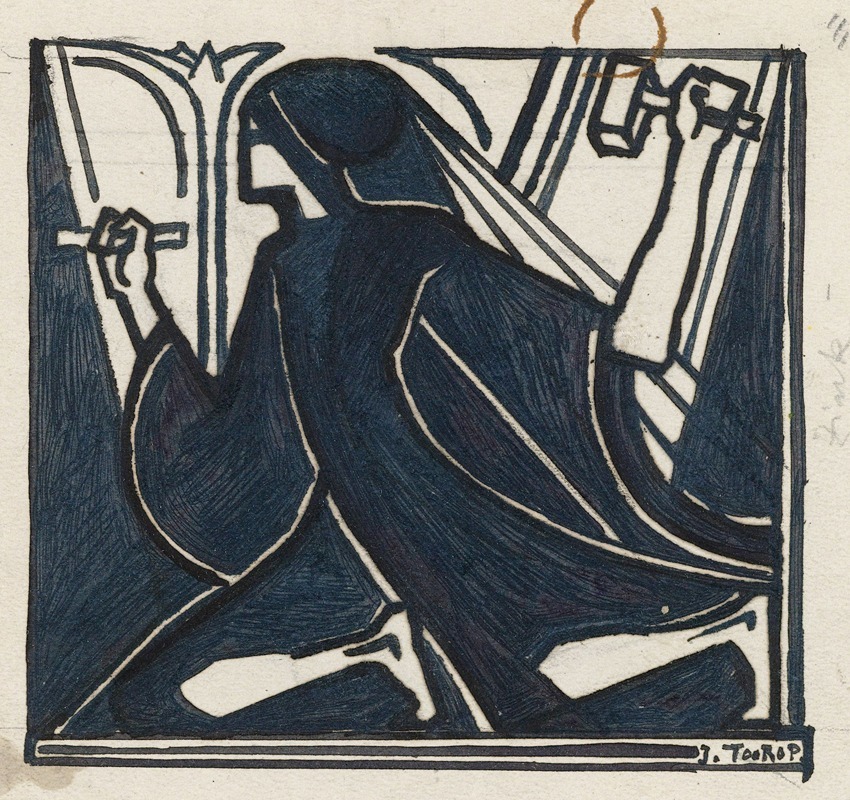
Knielende figuur met hamer en beitel
A hand-painted replica of Jan Toorop’s masterpiece Knielende figuur met hamer en beitel, meticulously crafted by professional artists to capture the true essence of the original. Each piece is created with museum-quality canvas and rare mineral pigments, carefully painted by experienced artists with delicate brushstrokes and rich, layered colors to perfectly recreate the texture of the original artwork. Unlike machine-printed reproductions, this hand-painted version brings the painting to life, infused with the artist’s emotions and skill in every stroke. Whether for personal collection or home decoration, it instantly elevates the artistic atmosphere of any space.
"Knielende figuur met hamer en beitel" (Kneeling Figure with Hammer and Chisel) is a painting by the Dutch-Indonesian artist Jan Toorop. Jan Toorop, born Johannes Theodorus Toorop on December 20, 1858, in Purworejo, Java, was a prominent figure in the Symbolist movement and later associated with Art Nouveau. His works are known for their intricate detail, symbolic content, and often mystical themes.
The painting "Knielende figuur met hamer en beitel" was created in 1885. It depicts a kneeling figure, presumably a craftsman or sculptor, holding a hammer and chisel. The figure is engaged in the act of creation, which is a recurring theme in Toorop's work, reflecting his interest in the artistic process and the role of the artist as a creator.
Toorop's style during this period was influenced by various movements, including Impressionism and Symbolism. His works often feature elongated figures and a strong sense of line, which would later become more pronounced in his Art Nouveau phase. The painting is characterized by its detailed rendering and the contemplative posture of the figure, suggesting a deep engagement with the act of creation.
Jan Toorop's early life in the Dutch East Indies and his subsequent move to the Netherlands had a significant impact on his artistic development. He studied at the Rijksakademie van Beeldende Kunsten in Amsterdam and later moved to Brussels, where he became associated with the avant-garde group Les XX (The Twenty). This group included artists such as James Ensor and Fernand Khnopff, who were also exploring Symbolist themes.
"Knielende figuur met hamer en beitel" reflects Toorop's interest in the spiritual and symbolic aspects of art. The use of a craftsman as the subject can be seen as a metaphor for the artist's own creative process. The painting's composition and the careful attention to the figure's posture and tools highlight the importance of craftsmanship and the physical act of creation.
Throughout his career, Toorop experimented with various styles and techniques, but his work consistently displayed a fascination with the mystical and the symbolic. His later works, particularly those from his Art Nouveau period, are characterized by their flowing lines and decorative elements, which can be seen as an evolution from the more restrained style of his earlier paintings like "Knielende figuur met hamer en beitel."
Jan Toorop's contributions to the Symbolist and Art Nouveau movements have left a lasting legacy in the art world. His ability to blend different influences and his dedication to exploring the deeper meanings behind his subjects have made his works enduringly significant. "Knielende figuur met hamer en beitel" is a testament to his skill as an artist and his commitment to portraying the profound connection between the artist and their craft.






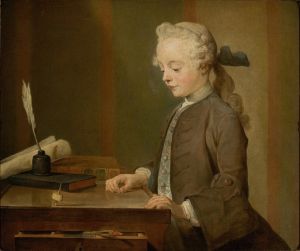
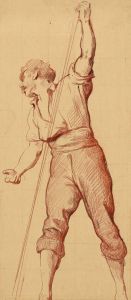
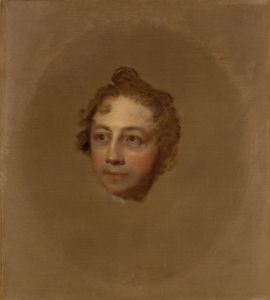
![Design for fine art print, ‘The Mad Dancer’.] [Woodcut print](/imgs/249287/s/winold-reiss-design-for-fine-art-print-the-mad-dancer-woodcut-print-17d9defa.jpg)
